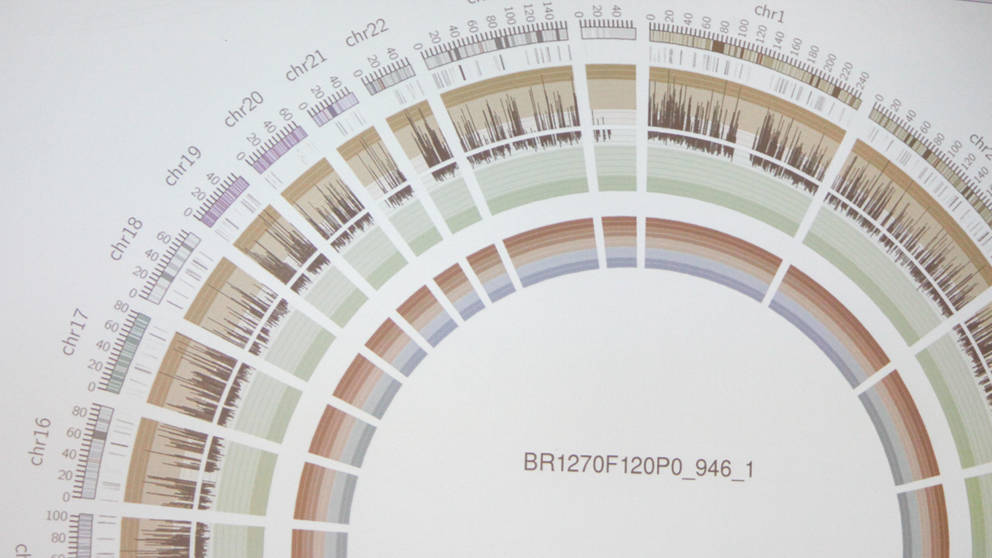
You may have noticed that the latest biomedical breakthroughs are utilizing more and more humanized mice. But, what is a humanized mouse and why would scientists want to utilize this type of model?
Humanized mouse is a general term that refers to a mouse that has been engrafted with something from a human. This could be a short strand of human DNA, human tissue, a human tumor, a humanized immune system, or parts of the human microbiome.
You can learn an awful lot about fundamental biology and/or genetics by studying the large number and great variety of strains of mice available to scientists today. But humanized mice can be even more powerful models of the human being and thus better for research into the problems of human development and disease.
Mice designed to compare tumor therapies

Take a PDX humanized mouse, for example. This is a mouse engrafted with a human tumor, known as patient-derived xenograft (PDX), that is sometimes used as an avatar to guide customized patient care and more typically used to conduct pre-clinical trials for new cancer drugs. Scientists can take a tumor from a patient, cut it into pieces, and put these pieces into multiple mice. Each fragment then grows and can then be divided into pieces and put into additional mice. Through this process, dozens of humanized mice are created, each with tumors nearly identical to each other and to the original human patient’s tumor. Scientists can treat different groups of PDX mice with alternative drugs, drug combinations, and drug sequences allowing them to determine which approach works best to eliminate a very specific tumor type.
This comparative work, for obvious ethical reasons, cannot be done in the patient from whom the tumor originated.
If you’re looking for a humanized mouse engrafted with a PDX tumor, JAX offers a wide variety of these mice that we call Onco-Hu ™ mice. These mice are a robust platform that are advantageous for proof-of-concept testing of novel immunotherapies targeting T cells or myeloid cells. The model itself is based on the well-published NSGTM and NSGTM-SGM3 dually engrafted with human CD34+ HSCs and clinically-relevant, low-passage PDX tumors.
Mice to study the human immune system
Another powerful approach is to re-create parts of the humanized immune system with a mouse. In this instance, a mouse with little or no mouse immune system is injected with specific human stem cells typically derived either from fetal tissue or cord blood. These cells create human T cells, B cells, and other immune cells in the mouse enabling scientists to explore how human immune systems attack a wide range of diseases including, for instance, polio, SARS-CoV-2 virus, cancer, and others. These mice can also be used to test how well both chemical and biologically based pharmaceuticals can treat infectious diseases, different types of cancer, and irregularities of the immune system like diabetes and lupus.
Humanized mice to figure out the function of human genes in health and disease
Through DNA editing technologies scientists are able to break a strand of DNA at a very precise location and either eliminate a short stretch of genetic code or add code from another organism. When the DNA in a mouse embryo is broken in this way and a human genetic sequence is inserted into its genome, scientists can study how a human gene or a specific genetic variation functions or impacts human health. Humanized mice can also be treated with alternative therapies to see if a disease-causing genomic abnormality can be stopped or mitigated.
And finally, we’re learning more and more about the microbiota that inhabit each of us and play a key role in determining who we are and how we function. The micro flora and fauna that inhabit us help fight infection, control our weight, hold off diabetes, digest food properly, and much more. Replacing the microbiome in a mouse with a carefully specified one derived from a human being can help us understand these functions and lead to the development of therapeutic approaches controlling or eliminating “bad” bugs and replacing them with “good” ones.
Thus, humanized mice can be created in a wide variety of ways and, in so doing, scientists gain the ability to learn more about how we, as humans, develop, grow, and fend off disease. Humanized mice also enable the testing of therapies to help us manage or cure diseases when our own systems fail us.
JAX has been at the forefront of developing and providing cutting-edge mouse models and powerful preclinical services to researchers worldwide. Humanized mice are just another example of the comprehensive models that are available to researchers to reach their milestones and progress life-improving or ife-saving therapies into the clinic and ultimately into the hands of patients. Visit the JAX humanized mouse model page to learn more.